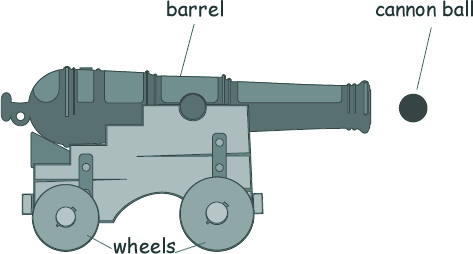GCSE Questions: Momentum Q1. The diagram shows one type of cannon.
(a) When the cannon is fired, there is an explosion inside the barrel. The explosion causes the cannon ball to move forwards and the cannon to move backwards. Explain, using the idea of momentum, why the cannon moves backwards after firing. Momentum is always conserved so, the total momentum before firing will be equal to the total momentum after firing. Before firing, the momentum of the cannon and the ball is zero as they are both stationary. After firing the ball has momentum forwards, so the cannon must have equal momentum backwards. [3 marks] (b) When the cannon is fired, the cannon ball accelerates at 2500 m/s2 for 0.05 seconds. The cannon ball has a mass of 8 kg. Calculate the momentum of the cannon ball 0.05 seconds after the cannon is fired.
Δv = at Δv = 2500 x 0.05 Δv = 125 m/s The initial velocity was zero so the final velocity is 125 m/s momentum of cannon ball = 8 x 125 [4 marks] [7 Marks TOTAL] |
Follow me...
|






